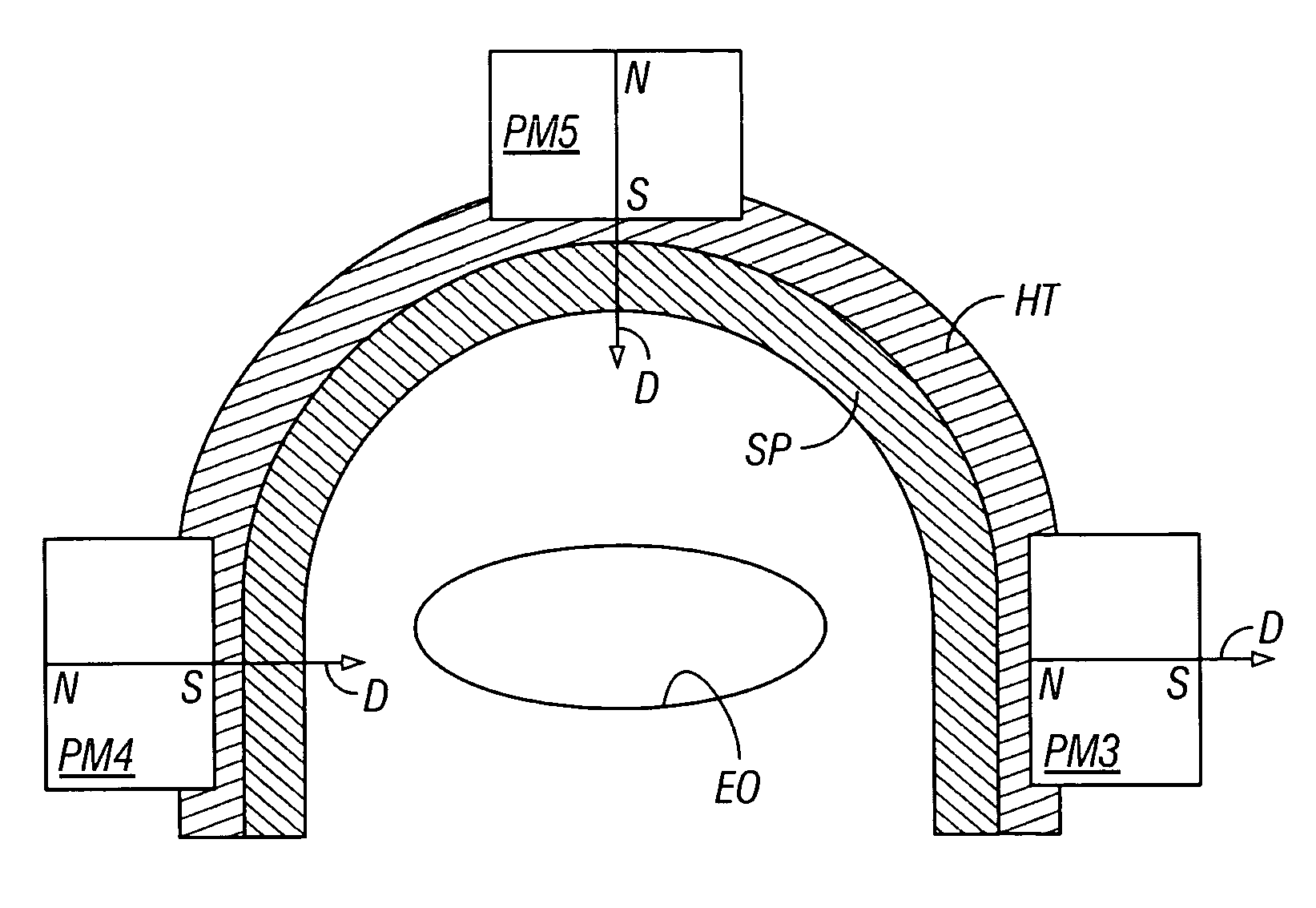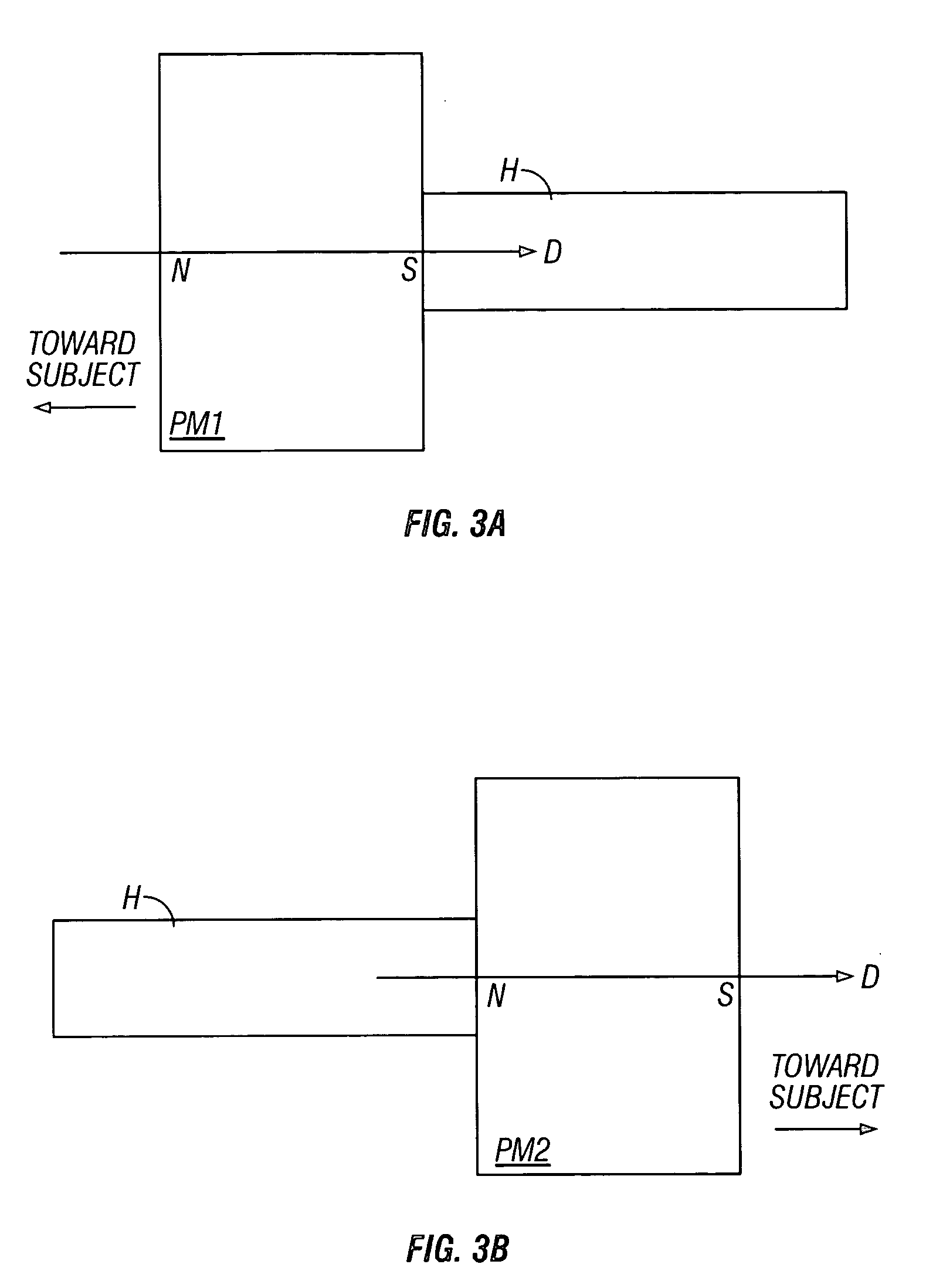Enhancement magnetizer for magnetic resonance imaging screening
a magnetic resonance imaging and enhancement magnet technology, applied in the field of enhancement magnetizers for magnetic resonance imaging screening, can solve the problems of increasing the risk of magnetic resonance imaging, increasing the risk of damage to the mri magnet itself, and achieving the effect of convenient and convenient application
- Summary
- Abstract
- Description
- Claims
- Application Information
AI Technical Summary
Benefits of technology
Problems solved by technology
Method used
Image
Examples
first embodiment
[0033] Preferably, for ease of use, the hand-held permanent magnet is attached to a non-ferromagnetic handle or, alternatively, to a non-ferromagnetic strap. FIGS. 3A and 3B show the apparatus of the present invention, namely a pair of hand-held permanent magnets, each with a non-ferromagnetic handle H, made of a material such as plastic or aluminum. Such hand-held permanent magnets, when applied according to the method of the present invention, can be used to magnetize a portion of the subject in three (x, y, and z) axes.
[0034] A first hand-held magnet PM1, shown in FIG. 3A, is for use in magnetizing one side of the desired portion of the subject, such as the left side of the head. For purposes of clarity, it should be understood that the following discussion of the method assumes that the technician using the equipment is face-to-face with the subject to be scanned. Note that, if positioned for magnetizing the left side of the subject's head, the direction of magnetization of the ...
second embodiment
[0044] A non-ferromagnetic strap SH can be used to facilitate grasping of the permanent magnet in the apparatus, shown in FIGS. 4A and 4B. The nonferromagnetic strap SH is substituted for the handle H and used in a similar manner as that described for usage of a permanent magnet attached to the handle H.
third embodiment
[0045] It can also be helpful, in some applications, to attach a soft material SM, such as a sponge-like foam, to the front side of each hand-held permanent magnet, as shown in FIGS. 5A and 5B. This can prevent banging the subject's head, for instance. The sponge-like material SM can also provide the desired separation between the permanent magnet and the subject, so that the applied magnetic field to the subject is not excessively high. For instance, if one desires to magnetize the front part of the head area, an excessively large magnetic field could be inadvertently applied too closely to the eye area, which could be a problem if an occult ferromagnetic foreign body were present.
PUM
| Property | Measurement | Unit |
|---|---|---|
| magnetic fields | aaaaa | aaaaa |
| magnetic fields | aaaaa | aaaaa |
| magnetization | aaaaa | aaaaa |
Abstract
Description
Claims
Application Information
 Login to view more
Login to view more - R&D Engineer
- R&D Manager
- IP Professional
- Industry Leading Data Capabilities
- Powerful AI technology
- Patent DNA Extraction
Browse by: Latest US Patents, China's latest patents, Technical Efficacy Thesaurus, Application Domain, Technology Topic.
© 2024 PatSnap. All rights reserved.Legal|Privacy policy|Modern Slavery Act Transparency Statement|Sitemap



